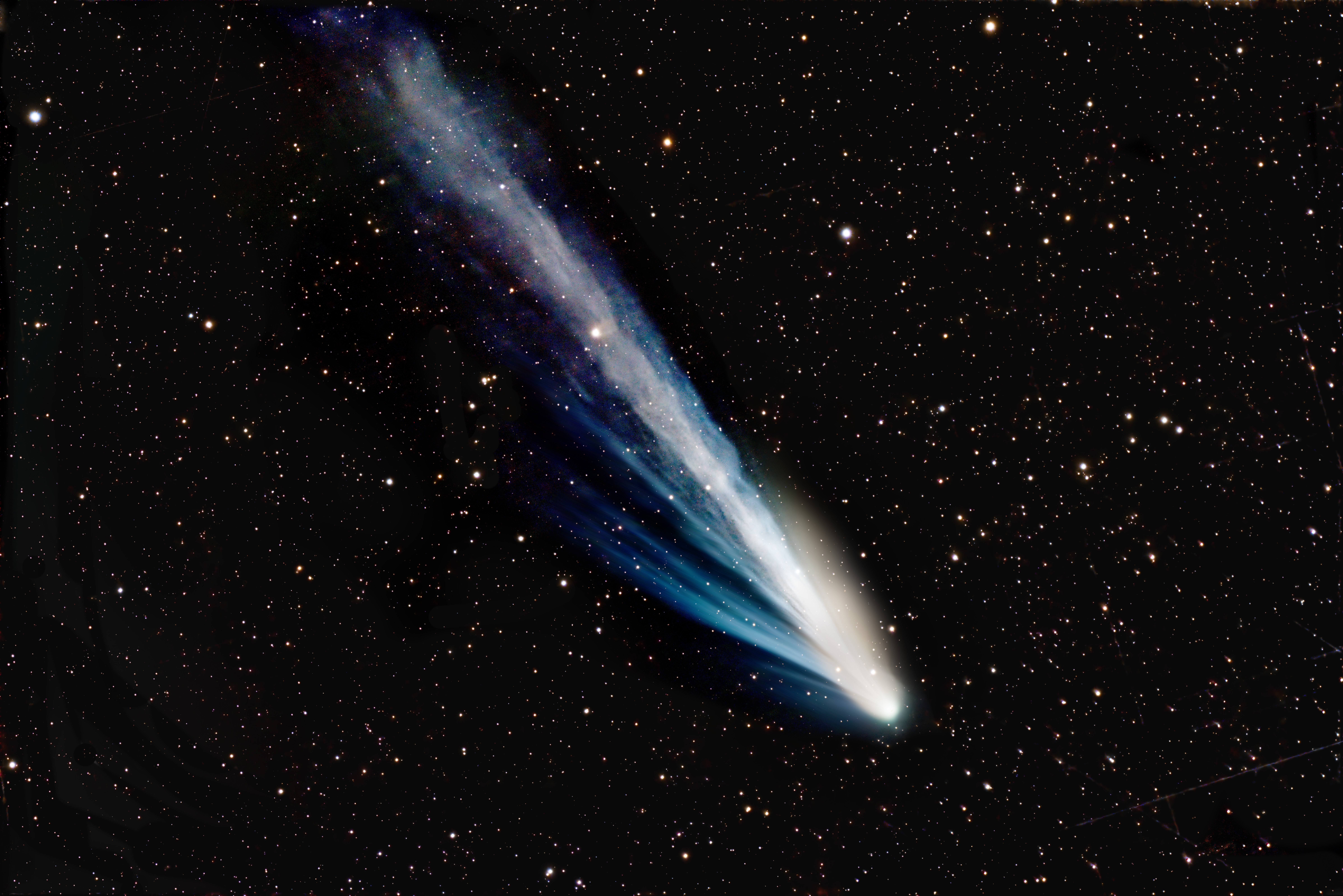The Aurora Australis isn't the only amazing astronomical event spicing up our night sky this year. Here are some others to watch for.
 A long exposure image of Comet 12P/Pons-Brooks, aka the ‘Devil Comet’. : Flickr: Don Heffernan CC BY 2.0
A long exposure image of Comet 12P/Pons-Brooks, aka the ‘Devil Comet’. : Flickr: Don Heffernan CC BY 2.0
The Aurora Australis isn’t the only amazing astronomical event spicing up our night sky this year. Here are some others to watch for.
Here are four great celestial highlights to mark on your calendar for May and the months ahead.
Whether you’re a fan of comets — dirty snowballs made of a mixture of ices and dust — or meteors — grains of dust shed by comets that ablate (essentially burn up, but without fire being involved) around 80 kilometres above Earth’s surface — you’ll find something to watch below.
1. The Eta Aquariid meteor shower
Peak date: The pre-dawn hours of May 6
Best view: Southern hemisphere
For observers south of the equator, the Eta Aquariid meteor shower is an annual highlight — the second best meteor shower of the year from southern shores (after the incredible Geminids in mid-December).
It reaches its peak this coming weekend — with the best rates expected in the early morning hours of Monday May 6.
The Eta Aquariids are best seen in the two hours before sunrise — with the radiant (the part of the sky from which the meteors appear to radiate) rising, for most locations, at between 1:30 and 2am.
To get the best view, set your alarm 90 minutes before sunrise, and look to the east. As the morning passes, towards dawn, you will see Saturn, Mars, the crescent Moon, and the planet Mercury in a line, above the eastern horizon — with the odd flash and streak of an Eta Aquariid meteor passing through your field of view.
Observers south of the equator can expect to see up to 20 or 30 meteors in that final hour before the sky brightens.
But be warned, meteors are like buses. You can wait ten minutes and see nothing, then three will come along at once.
2. Comet 12P/Pons-Brooks aka the ‘Devil Comet’
Best seen: First two weeks of May
Best view: Southern hemisphere
Much has been said and written about this Halley-type comet, which has been the source of much excitement and spectacular photographs over the past couple of months.
While the comet is now impossible to view from locations in the northern hemisphere, in a case of better the devil you know, the southern hemisphere is getting its turn to gaze at this celestial visitor.
So now is the time to catch a glimpse, and maybe take a picture or two, before the comet disappears back to the icy depths of the outer solar system.
Comet 12P/Pons-Brooks is currently best seen with binoculars, or photographed with a long exposure using a DSLR camera. It is an evening object, low in the western sky after sunset — but is gradually climbing higher into the sky with each evening that passes.
The best time to catch the comet is in the first two weeks of May, when it will be between the horizon and the constellation Orion.
Those with good eyesight and dark skies might still glimpse the comet with the unaided eye for another month or so. After that, the comet will fade from view, and will not return for another 71 years.
3. The Perseid meteor shower
Peak date: August 11 and 12
Best view: Northern hemisphere
Where the Eta Aquariids are a show for southern eyes, the opposite is true of the annual Perseid meteor shower.
For observers in the northern hemisphere, this is a regular summertime treat – and this year, conditions should allow the shower to put on a great spectacle.
Peaking on the nights of August 11 and 12, the Perseids are best seen in the hours after midnight — but for locations in northern Europe, meteors from the shower can be seen at any time once the Sun has set and the skies have darkened.
Perseid meteors are fast and often spectacularly bright — and in the early hours of the morning, observers in mid-northern latitudes could easily see as many as sixty meteors per hour. Simply lay back, relax, and enjoy the show.
4. Comet C/2023 A3 (Tsuchinshan-ATLAS)
Best seen: Second week of October
Best view: Everywhere
Comet C/2023 A3 (Tsuchinshan-ATLAS) caused great excitement among astronomers when it was discovered in January 2023.
It was immediately obvious that it had the potential to be something spectacular — though astronomers were careful and cautious in their excitement, as comets are notoriously fickle and prone to misbehave.
So far, things are looking good, however, and it seems likely that comet C/2023 A3 (Tsuchinshan-ATLAS) will be a spectacular sight in late September and through October.
This is definitely one to keep an eye on — there is always the possibility that it might fade or crumble — but should it continue to behave as expected, then it should be visible with the unaided eye to observers across the globe in the morning sky in late September.
It will then dive between the Earth and the Sun, potentially even becoming visible in broad daylight (though this is unlikely), before becoming a spectacular object in the evening sky in the second week in October.
If everything goes as astronomers hope, it may well be that comet C/2023 A3 (Tsuchinshan-ATLAS) will be the highlight of the astronomical year — and potentially the next truly great comet. Fingers crossed!
Professor Jonti Horner is an astronomer and astrobiologist based at the University of Southern Queensland, in Toowoomba. He has a particular interest in the solar system, and especially the comets, asteroids and meteors therein. In recent years, his research focus has expanded to include the search for, and study of, exoplanets.
Originally published under Creative Commons by 360info™.






